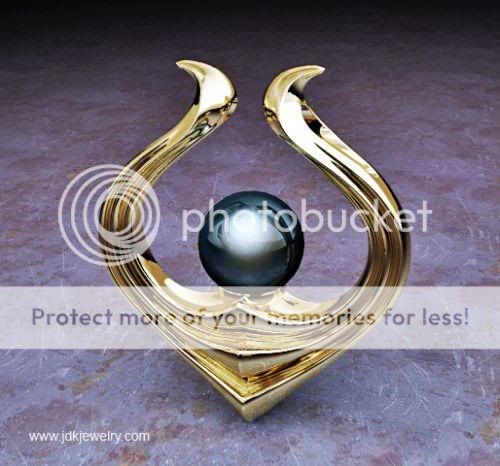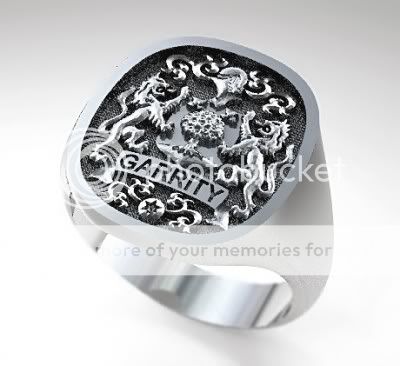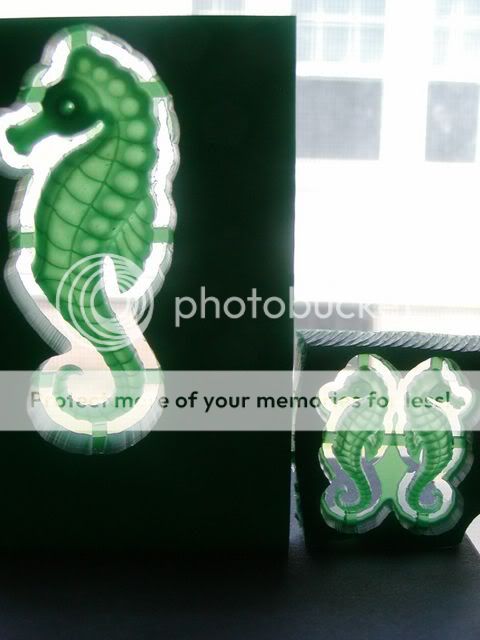Annabel and the Orchid community,
I really should have answered your post’s question earlier on; I
apologize for not having done so. I also apologize if this note gets
long winded.
Let me begin by saying that I’ve been doing jewelry professionally,
as my sole source of income, since 1979. I have done fabricated work
as well as cast. I started doing what has been referred to on this
forum as “art jewelry” and progressed into the more mainstream
commercial end of the jewelry field, thinking I could make a better
living sooner following this path. Since I began doing mostly
wholesale work for other jewelers in 1988, the great majority of the
work I’ve done has been waxed and cast jewelry, interspersed with
some fabricated pieces and fabrication of cast pieces. I began
working in CAD/CAM in 2001 (Rhino is the software I am currently
using).
With respect to the “CAD Vs. Wax Work” question, by all means learn
both, and learn how to fabricate well. I have been doing more and
more of my designs in CAD as time goes by, peaking at last count to
70% of my Christmas 2005 selling season custom work being done by
CAD/CAM. It has increased my profitability by no less than 35% each
year since I have been using it; last year saw a 63.5% increase in
net profit, totally attributable to CAD/CAM work. I still fabricate
metal or carve waxes where and when it is more appropriate.
Clearly, for me, Rhino has been a great boon to my productivity and
thus my profitability. I still, however do hand carved and hand
fabricated work wherever it makes better logistic sense. I currently
do not have a 3D scanner, so rings to be custom fitted to an existing
ring are easier and faster for me to hand carve than to 3D model for
a perfect fit. Objects requiring hard edge borders with inside square
joins are sharper and faster to fabricate. Though some of the RP
systems are able of producing a nearly perfect inside square edge,
finishing inside that corner is at best time consuming and
challenging. Some objects (perhaps because of my own mental block to
visualizing their component curves or surfaces) would just simply
take too long to model in CAD, so I carve or fabricate them.
Being “organic” or “soft or smooth” in form does not preclude
CAD/CAM, even with Rhino. Using control point modeling you can take a
"ball of clay" (a modeled sphere rebuilt to have many control points)
and sculpt it into any form your mind’s eye can see; so when I see
posts saying CAD/CAM can’t come close to producing what hand work
can, I cringe. I carve and I CAD so I know I can produce a bird’s
head with expression either way. (I’ve done both; if you’re
interested I can send, off-line, computer renderings and photographs
of finished CAD/CAM work to show examples of what I’m talking
about.) I’ve helped others to learn the methods to accomplish
completing valid Rhino models, in what ever design style they prefer
to work. I’m hoping to soon become a user of 3Design to broaden what
I can already do with CAD. Still other programs such as JewelSmith
offer tools to texture surfaces in a way difficult with hand carving
(unavailable with Rhino and Matrix, at present, but those tools
should be available in Rhino V-4 and Matrix 5.3’s “Matrix Art”, both
coming soon in nonfat versions).
Honestly, I know I can carve or fabricate anything I can do in CAD.
The caveat is the time savings and/or the perfect symmetry that comes
from CAD over hand work, in most cases. A class ring that might take
me 18-24 hours to carve to the same exacting detail as I could do
with Rhino, would only take me 8-10 hours to CAD model. If I take an
RTV mold of the original hand carved wax, I need to be extremely
careful not to nick the wax while cutting open the mold. If I do nick
my wax, I need to repair it or use a wax pulled from the mold to cast
as my master model (there will be shrinkage in the injected wax, so
it will not be the same size as originally planned for.) Once I cast
the hand carved wax, or the injected copy, if there is a problem with
the casting of that master model, I’d have to re-carve, or re-cast
an injection. With a CAD model I can send the file back to the mill
or other RP machine and have another perfect facsimile of what I
designed on screen; with no shrinkage from that which had previously
been planned into the model, no mold parting lines, no hassles
getting the injection to fill tight detail, and with no more than a
few extra minutes spent to set the model up for re-milling or
re-printing. It is arguable which produces the “better” model; as has
been voiced here on the forum; but in my area of the jewelry making
field, my clients demand my work to be as nearly perfect as is at
all possible. That level of work is much less time consuming to
attain using CAD/CAM then by using hand methods, making it more
affordable for my client’s clients and making it possible for me to
produce more work within the same time period.
I love carving both wax and metal, I love hand fabricating with
intricate hinging and clasping mechanisms, I love hand engraving
(which I still use to embellish some of my CAD creations); but I also
love how profitable CAD/CAM has made my business by making all of
that so much more efficient. I also love having an easier time
(because of my increase profitability) affording what I’d like to
purchase for myself, be it great food or the toys to enjoy life away
from the bench.
Paul D. Reilly
The Paul Reilly Company
Before there is any confusion (and hopefully after there has been as
much laughter as I have had upon reading my post on CAD Vs. Wax
Work) I’d like to clarify that there are NO non-fat versions of
computer software for CAD out there at thiss time. (My apologies for
misleading those of you who would have liked to “trim down” by using
CAD rather than traditrional bench techniques!).
And thus helps demonstrate that it is not the computer that is
building the models that you see coming from CAD programs, but
rather the user/designer who is (or should be, at any rate) in
control of what gets output from the machines.
My spell check caught (without my seeing it personally) the words
"non-beta version" and corrected it for me to a word combination it
recognized:…nonfat…OOOPs!!!
There is no substitute for human proof reading that is any more
reliable than the person using it…same as happens in CAD/CAM; CAD
is as much art and the user’s abilities as anything else we do in
the jewelry fields.



